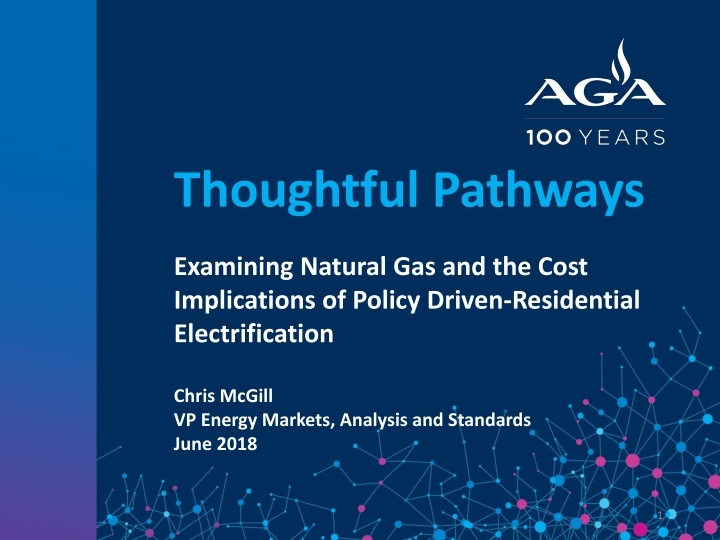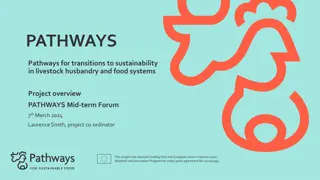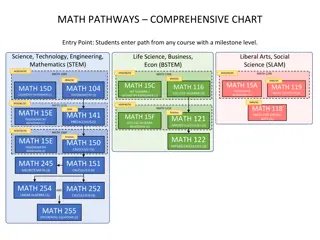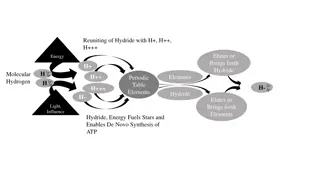Thoughtful Pathways
This publication by Chris McGill, VP of Energy Markets, delves into the impact of policy-driven residential electrification on natural gas usage and related costs. The analysis, conducted in June 2018, offers insights into the changing energy landscape.
Download Presentation

Please find below an Image/Link to download the presentation.
The content on the website is provided AS IS for your information and personal use only. It may not be sold, licensed, or shared on other websites without obtaining consent from the author.If you encounter any issues during the download, it is possible that the publisher has removed the file from their server.
You are allowed to download the files provided on this website for personal or commercial use, subject to the condition that they are used lawfully. All files are the property of their respective owners.
The content on the website is provided AS IS for your information and personal use only. It may not be sold, licensed, or shared on other websites without obtaining consent from the author.
E N D
Presentation Transcript
Thoughtful Pathways Examining Natural Gas and the Cost Implications of Policy Driven-Residential Electrification Chris McGill VP Energy Markets, Analysis and Standards June 2018 1
Progress in technology and market developments for all energy sources need to be understood and acknowledged but what problem is policy-driven electrification of the natural gas residential space and water heating sector trying to solve? 2
AGA Study Will residential electrification actually reduce emissions? How will residential electrification impact natural gas utility customers? Main Questions the Study Addresses What are the impacts on the Power Sector and Transmission infrastructure? What is the overall cost of residential electrification? 3
Initial Findings from Study 1. Natural gas is a critical residential energy source: Residential natural gas demand in January is more than twice electricity demand in July 2. Total GHG reduction potential from policy-driven residential electrification is small: Ranging from 1.0 to 1.5 %of U.S. GHG emission in 2035. 3. Policy-Driven Electrification will be burdensome to customers: average residential household energy costs (utility bills and equipment/renovation costs) increase by 38 to 46 % . Implications of Policy-Driven Electrification of Residential Gas Use, AGA, June 2018. 4
Initial Findings from Study 4. A policy-driven residential space and water heating strategy is expensive to the economy - $590 Billion to $1.2 Trillion in total incremental energy costs. 5. Such a policy may require infrastructure investments of $150 to $425 Billion for generation capacity and transmission. 6. Policy-driven electrification of the residential sector is an expensive tool for greenhouse gas emissions reductions - $572 to $806 per ton CO2. Implications of Policy-Driven Electrification of Residential Gas Use, AGA, June 2018. 5
Emerging gas technologies can make substantial and cost-effective contributions to GHG reduction goals ~100 Innovative Gas Technologies for Residential / Small Commercial identified in our global search 25-40% GHG reduction potential on a customer basis by integration of these technologies and other efficiency practices 60-80% GHG reduction sufficient to meet COP 21 goals with inclusion of future CHP technologies and Renewable Gas Policy goals for sustainable energy can be achieved at significantly lower consumer cost through integrating innovative gas solutions into long-term resource planning, while offering customers more choice and improved affordability, reliability and comfort. Gas technologies can enhance energy system reliability (system-wide and as a local backup) and efficiency, while reducing the need for new electric generation and T&D infrastructure and preserving the future value of gas infrastructure. Electric technologies will also improve, and are supported by incentives, but their GHG impacts depend on the generation fuel mix. In some regions electrification may increase GHG emissions through the 2030s. Enovation Partners, May 2018.
Innovative technologies were assessed, prioritized and aligned with relevant end use pathways High priority technologies by major end use, Enovation Partners, May 2018 High production fryers Boilerless steamer - Multistacked convention steamer for high volume cooking Combination steam and heat oven Low-cost residential gas absorption heat pump (GAHP) combination Condensing furnace Transport Membrane Humidifier (TMH) 68 IoT thermostats (i.e. Nest, Honeywell) Building envelope (insulation, windows, building materials) Demand controls for HW systems Thermostatically controlled low flow shower head Solid oxide fuel cells* Micro CHP gas recip, sterling engine* Tankless water heater - Maintenance-free approaches for tankless water heaters Solar-assisted heating - PV assisted domestic hot water heater (potable) Unplugged power burners - Two- Phase Thermo-Syphoning (TPTS) technology Combined Space and Water Heating Systems* Ozone and cold water washing Fuel cell electric vehicles (hydrogen) Commercial CNG vehicles Note: All technologies were independently evaluated and scored by several SMEs; evaluation criteria primarily considered GHG impact and time to market; aggregated scores were consistent among experts and robust against multiple weightings; * designates technology with multiple end-uses, but listed only once
Questions? Chris McGill VP Energy Markets, Analysis and Standards American Gas Association cmcgill@aga.org 8























